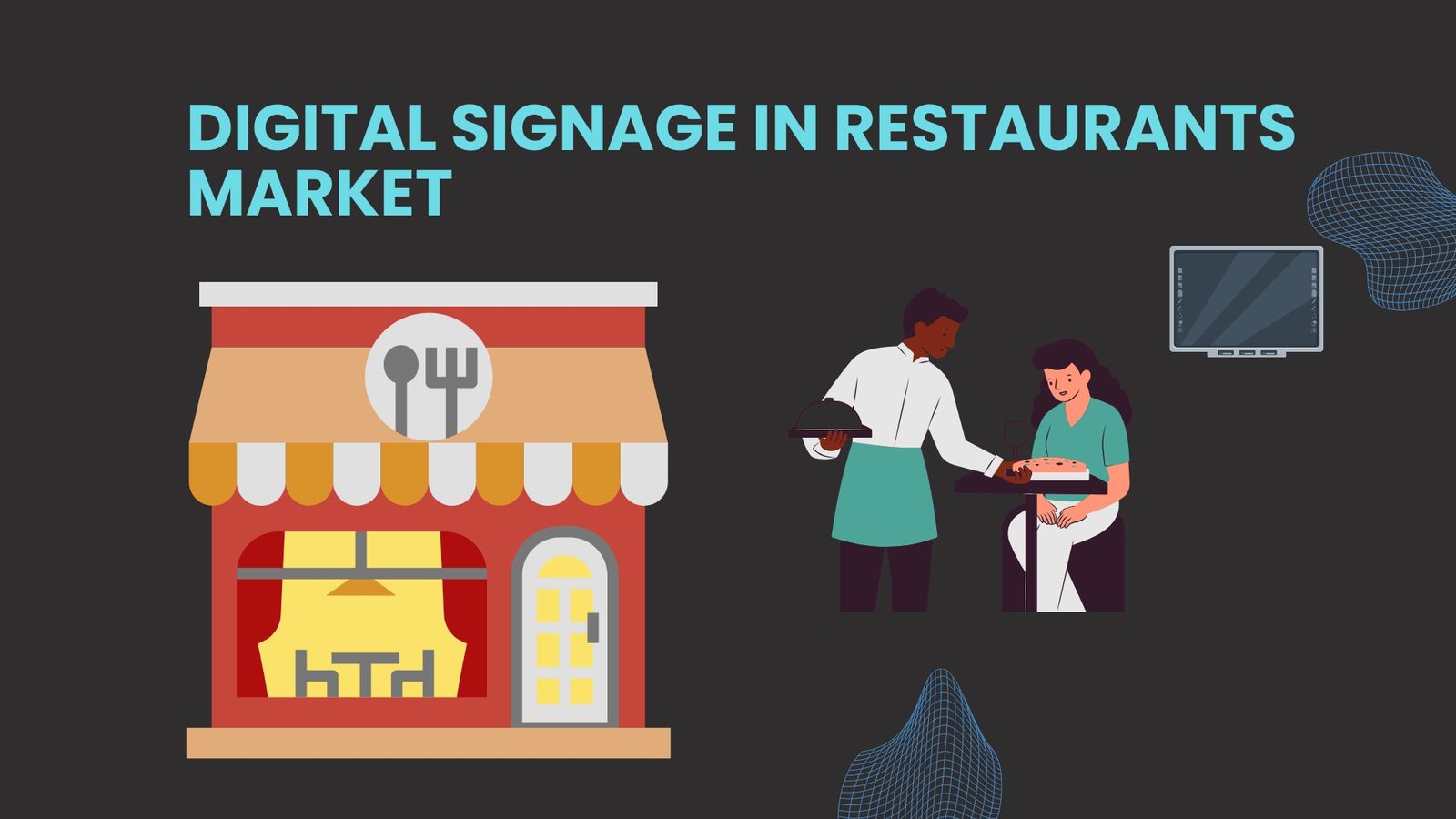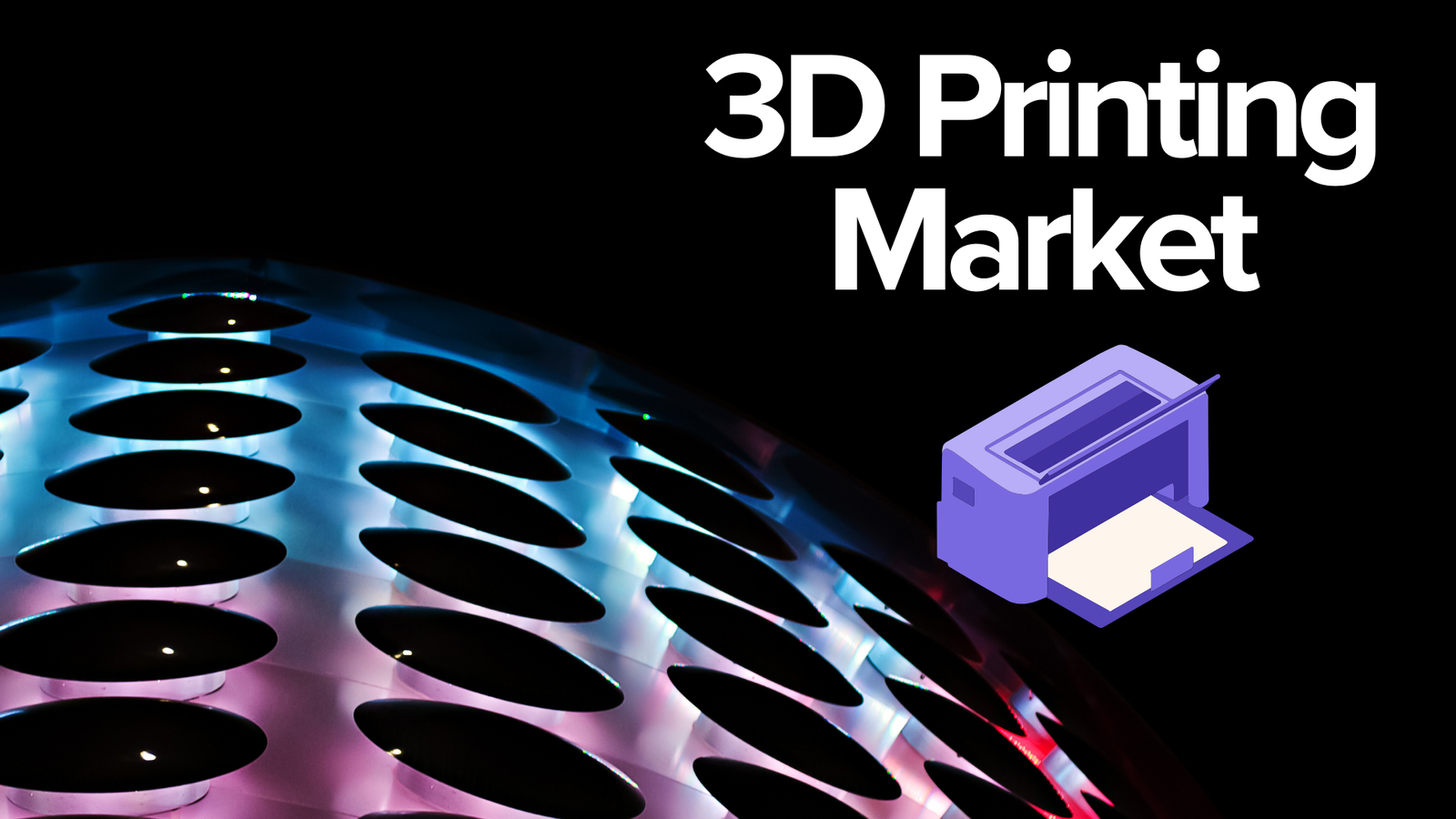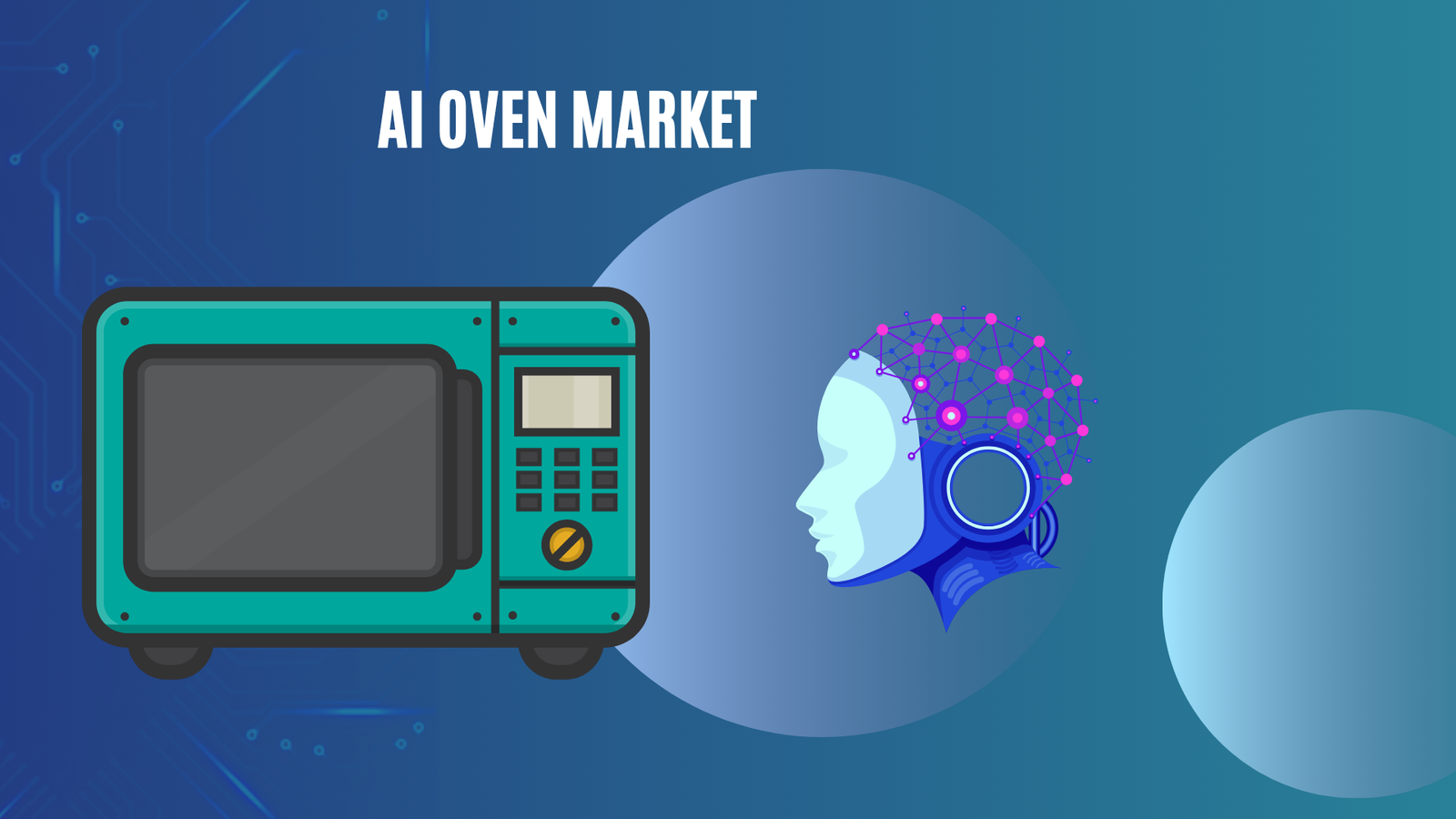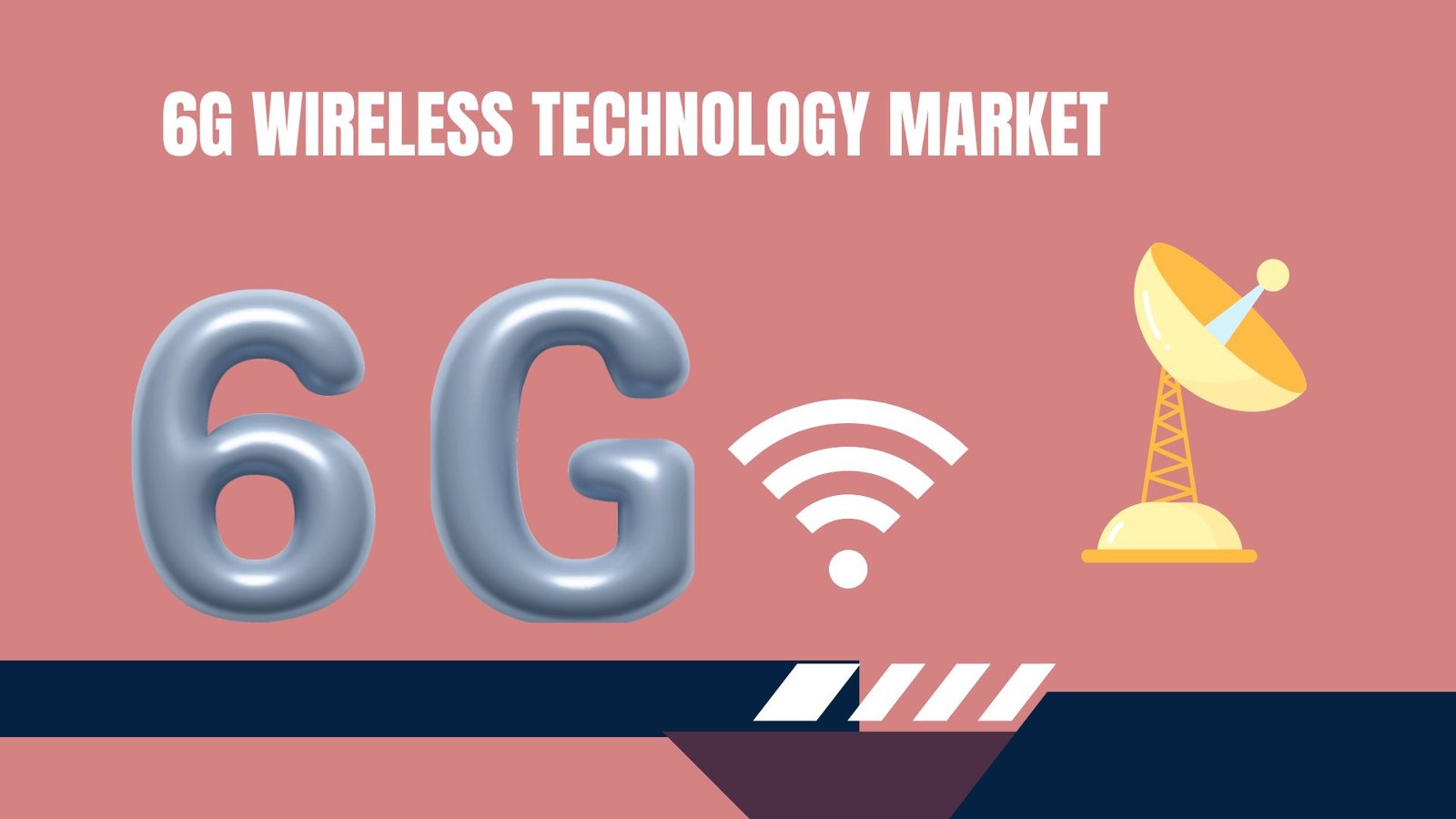Digital Signage in Restaurants Market Grow to USD 1.6 Billion By 2034
Updated · Aug 29, 2025

WHAT WE HAVE ON THIS PAGE
Introduction
According to Market.us, The Global Digital Signage in Restaurants Market is witnessing steady growth as foodservice operators adopt digital solutions to improve customer engagement and streamline operations. Valued at USD 0.80 Billion in 2024, the market is projected to nearly double, reaching about USD 1.6 Billion by 2034, advancing at a CAGR of 7.7% from 2025 to 2034.
Digital signage in restaurants refers to the use of digital displays and screens within dining establishments to show menus, promotions, advertisements, and other relevant customer information. This technology is designed to replace traditional static signs and printed menus, offering a dynamic, flexible, and visually engaging way to communicate with customers. It enables restaurants to update content instantly and tailor messages in real time based on different factors like time of day, customer preferences, or inventory availability.
The top driving factors for digital signage adoption in restaurants include the growing demand for better customer experience and operational efficiency. Customers now expect faster service and more interactive, visually appealing environments. Restaurants can instantly update their menus or promote limited-time offers, reducing wait times and increasing sales. Additionally, the rising trend of contactless ordering and mobile integration pushes restaurants to adopt smarter digital solutions that enhance convenience and safety while fostering personalized engagement.

Key Insight Summary
- By Region: Asia Pacific led with a 42.7% share, reflecting strong adoption of digital displays across the foodservice sector.
- China accounted for USD 0.15 Billion in 2024, supported by a 6.51% CAGR, driven by rapid restaurant digitization in urban areas.
- By Screen Size: The 32–45 inches segment dominated with 55.7% share, as these displays balance visibility and space efficiency in restaurants.
- By Display Type: LED displays led with 67.2% share, owing to durability, energy efficiency, and high brightness suitable for indoor and outdoor use.
Analysts’ Viewpoint
Investment opportunities arise as digital signage technology evolves toward more affordable, scalable solutions with cloud-based platforms and AI-powered content. Restaurants of all sizes can now invest in digital signage to improve customer experiences and operational efficiency, with vendors offering customizable packages suitable for small local eateries to large global chains. The ongoing shift toward experience-driven dining ensures growing demand and a vibrant market for these technologies.
Business benefits include increased sales through strategic menu placement and dynamic promotions, reduced labor for menu management, improved customer satisfaction due to clear and timely information, and compliance ease with health and safety regulations. Restaurants see a smoother workflow, less human error, and an enhanced modern atmosphere that attracts and retains customers.
The regulatory environment around digital signage in restaurants mainly focuses on compliance with menu labeling laws requiring nutritional and allergen information. Digital signage facilitates quick compliance by allowing easy updating of displayed information without reprinting physical menus. Additionally, with health and safety regulations emphasizing touchless interactions, digital signage supports contactless ordering and payments, promoting safer customer experiences.
Role of Generative AI
- Real-time Dynamic Menus: AI enables menus that adapt instantly based on inventory, demand, weather, and time of day, optimizing sales opportunities.
- Intelligent Upselling and Promotions: Generative AI suggests personalized promotions and add-ons based on customer preferences and purchase history.
- Fresh Visual Content Creation: AI-powered image generators create appealing, brand-consistent food visuals and seasonal themes automatically.
- Enhanced Customer Interaction: AI facilitates interactive features like touch customization, voice synthesis, and natural language ordering interfaces.
- Operational Efficiency: Integrates with POS and inventory systems for automatic updates and centralized control across multiple locations, reducing manual effort and errors.
Regional Analysis
In 2024, the Asia-Pacific (APAC) region held a dominant position, accounting for over 42.7% of the global market and generating close to USD 0.3 Billion in revenue. This leadership is supported by the rapid expansion of quick-service restaurant chains, rising consumer demand for digital experiences, and strong investments in technology infrastructure across emerging economies in the region.

Emerging Trends
- Personalized Customer Experiences: AI-driven analytics deliver targeted content tailored to individual diner preferences.
- Mobile Integration: Use of QR codes and NFC for customers to interact with signage via their smartphones for ordering and promotions.
- Interactive Displays: Touchscreen kiosks and engaging interfaces allowing order customization and gamified wait experiences.
- Sustainability Focus: Adoption of energy-efficient and eco-friendly signage materials aligning with environmental values.
- AI and Automation: Automated content scheduling and menu optimization based on real-time data to boost operational productivity.
Growth Factors in the Market
- Increasing Demand for Enhanced Customer Engagement: Restaurants seek interactive and appealing ways to engage diners.
- Operational Efficiency Needs: Streamlining ordering and reducing wait times with digital signage technologies.
- Rising Adoption in Quick-Service Restaurants (QSRs): Fast-growing segment driving digital signage deployment.
- Technological Advances: Improvements in AI, edge computing, cloud integration, and high-quality displays.
- Desire for Personalization and Data-Driven Marketing: Using customer data for timely promotions and upselling, increasing average order value.
Top Use Cases
- Digital Menu Boards: Visual, flexible menus with real-time updates and multimedia content.
- Promotional Displays: Highlighting limited-time offers, new items, and combos to drive impulse buys.
- Interactive Ordering Kiosks: Self-service options reducing errors and speeding service.
- Order Status/Queue Displays: Reducing perceived wait times by showing real-time order progress.
- Customer Engagement Content: Cooking demos, nutrition facts, social media feeds, and entertainment content.
Customer Insights
- Improved Dining Experience: 74% of customers agree clear digital displays influence food choices.
- Impulse Purchases: 80% of customers make unplanned buys triggered by digital displays.
- Personalized Offers: Data-driven menu displays increase transaction sizes.
- Reduced Wait-Time Stress: Digital queue management improves customer satisfaction.
- Trust Building with Transparency: Displaying nutrition, allergen info, and ingredient sources enhances customer trust.
Driver Factor
Growing Demand for Enhanced Customer Experience
A key driver for digital signage in restaurants is the increasing customer demand for a more engaging and interactive dining experience. Digital signs allow restaurants to display vivid menus, real-time promotions, and visually appealing content that captures attention and simplifies decision-making. This capability creates a smoother, faster ordering process that customers appreciate, which makes them more likely to return.
Features like interactive kiosks enable order customization, reducing errors and wait times, ultimately lifting customer satisfaction and loyalty.
Restaurants also enjoy the benefits of real-time content updates, meaning they can instantly adjust promotions and menu items based on inventory or time of day. This flexibility helps restaurants stay relevant and competitive while responding to customer preferences promptly, making digital signage a vital tool in improving the overall customer experience.
Restraint Factor
High Initial Setup and Maintenance Costs
One significant restraint slowing wider digital signage adoption in restaurants is the high cost tied to installation and upkeep. The upfront investment in quality display screens, controllers, and software can be expensive, particularly for smaller or mid-sized establishments operating with tighter budgets. Beyond initial hardware purchases, digital signage solutions require ongoing maintenance, including software updates and occasional repairs, adding to total ownership costs.
In busy restaurant environments, these digital systems may experience wear and tear at a quicker pace, increasing maintenance frequency and expenses. For businesses with limited financial resources or narrow profit margins, this ongoing cost burden presents a challenge, limiting the accessibility of digital signage despite its benefits.
Opportunity Analysis
Expansion in Emerging Markets
Emerging markets represent a promising opportunity for the digital signage restaurant sector. Rapid urban growth, increasing disposable incomes, and evolving dining preferences in regions such as Asia-Pacific, Latin America, and the Middle East are driving demand for modern, tech-driven dining experiences. As quick-service restaurants grow in these areas, they invest more in digital menu boards and ordering kiosks to enhance convenience, personalization, and efficiency.
Moreover, digital signage solutions are more affordable in these markets, easing adoption. High smartphone use further supports integrating digital signage with mobile ordering apps, creating seamless, interactive customer journeys. This environment offers fertile ground for restaurants to differentiate themselves while satisfying the local appetite for innovation.
Challenge Analysis
Integration with Existing Systems
A major challenge for digital signage deployment in restaurants is ensuring smooth integration with legacy systems like point-of-sale (POS) software and inventory management tools. Many restaurants struggle to synchronize digital menus and promotions with these existing back-end systems to reflect real-time pricing and menu availability. Achieving this integration requires technical expertise and can incur extra costs.
Additionally, maintaining consistent content updates across multiple locations demands robust cloud infrastructure, which may be beyond the reach of smaller operators. Hardware-software compatibility issues can lead to fragmented systems that fail to deliver the expected operational efficiencies. Overcoming these integration and compatibility hurdles is essential for restaurants to fully benefit from digital signage technology.
Key Market Segments
By Screen Size
- 22 inches – 32 inches
- 32 inches – 45 inches
- 45 inches – 55 inches
- 55 inches – 65 inches
- 65 inches – 85 inches
- Others
By Display Type
- LED
- LCD
- OLED
- Others
By Application
- Promotions
- Menu Boards
- Order Displays
- Others
Top Key Players in the Market
- Samsung Electronics
- LG Electronics
- NEC Corporation
- Elo Touch Solutions
- BrightSign
- Peerless-AV
- Panasonic Corporation
- Zeno Technologies
- Sharp Corporation
- ViewSonic
- AOPEN
- YCD Multimedia
- Others
Sources

Joseph D'Souza started Techno Trenz as a personal project to share statistics, expert analysis, product reviews, and tech gadget experiences. It grew into a full-scale tech blog focused on Technology and it's trends. Since its founding in 2020, Techno Trenz has become a top source for tech news. The blog provides detailed, well-researched statistics, facts, charts, and graphs, all verified by experts. The goal is to explain technological innovations and scientific discoveries in a clear and understandable way.











